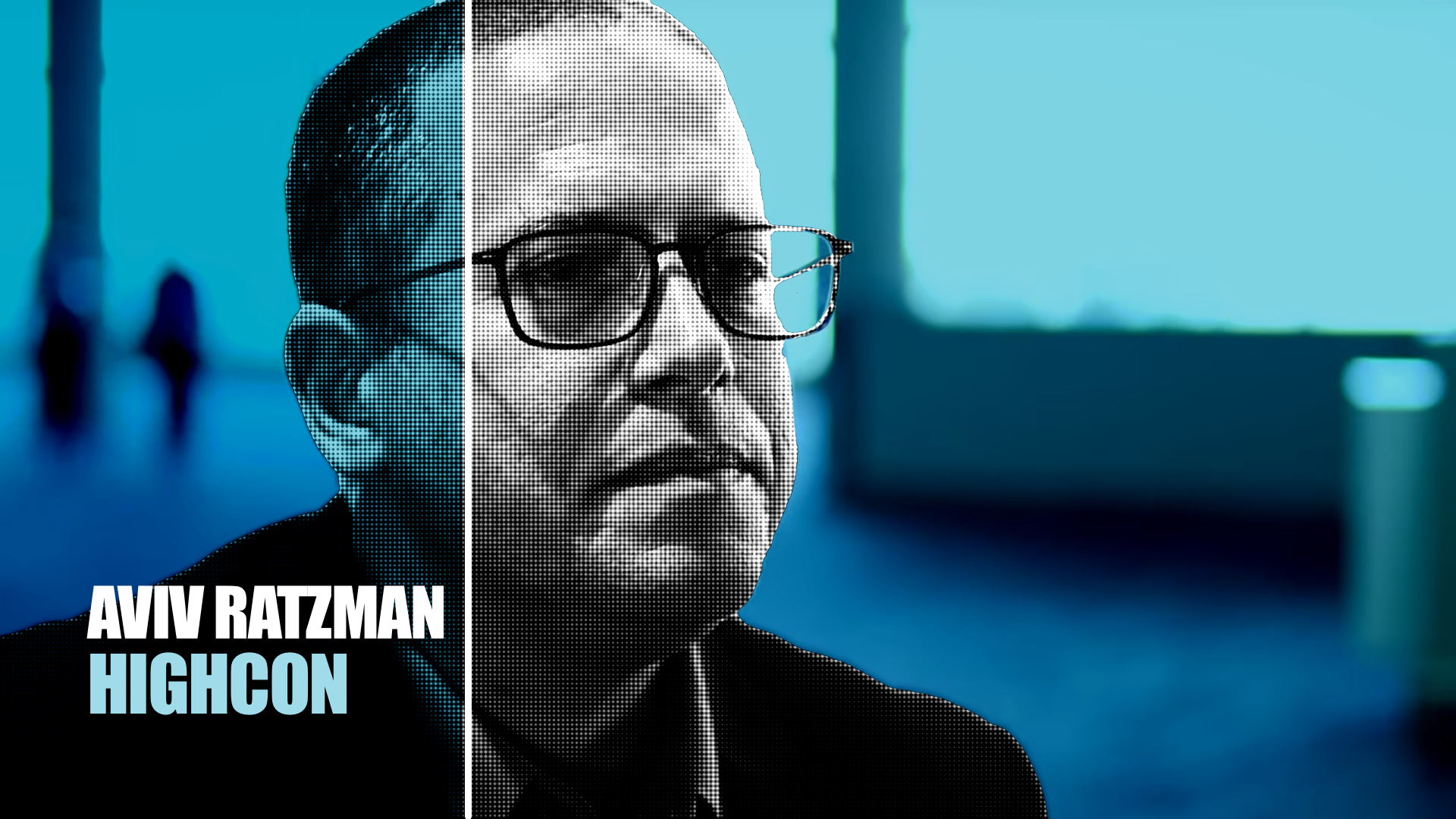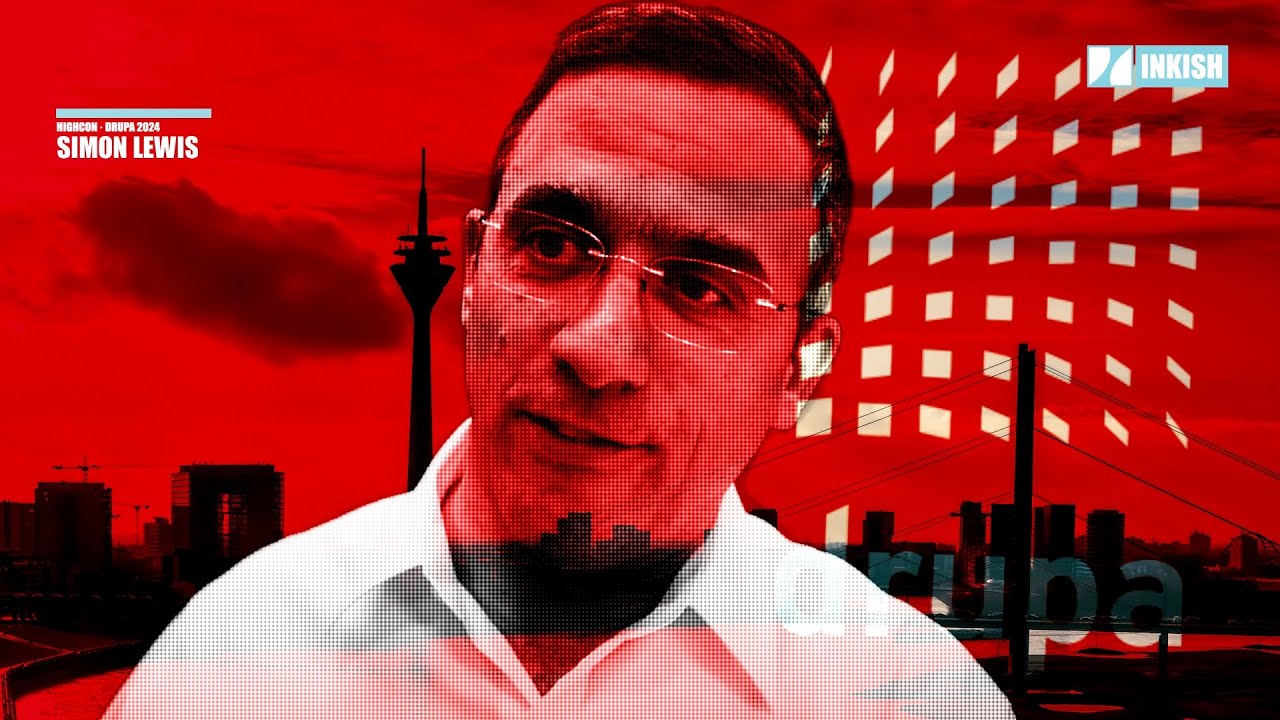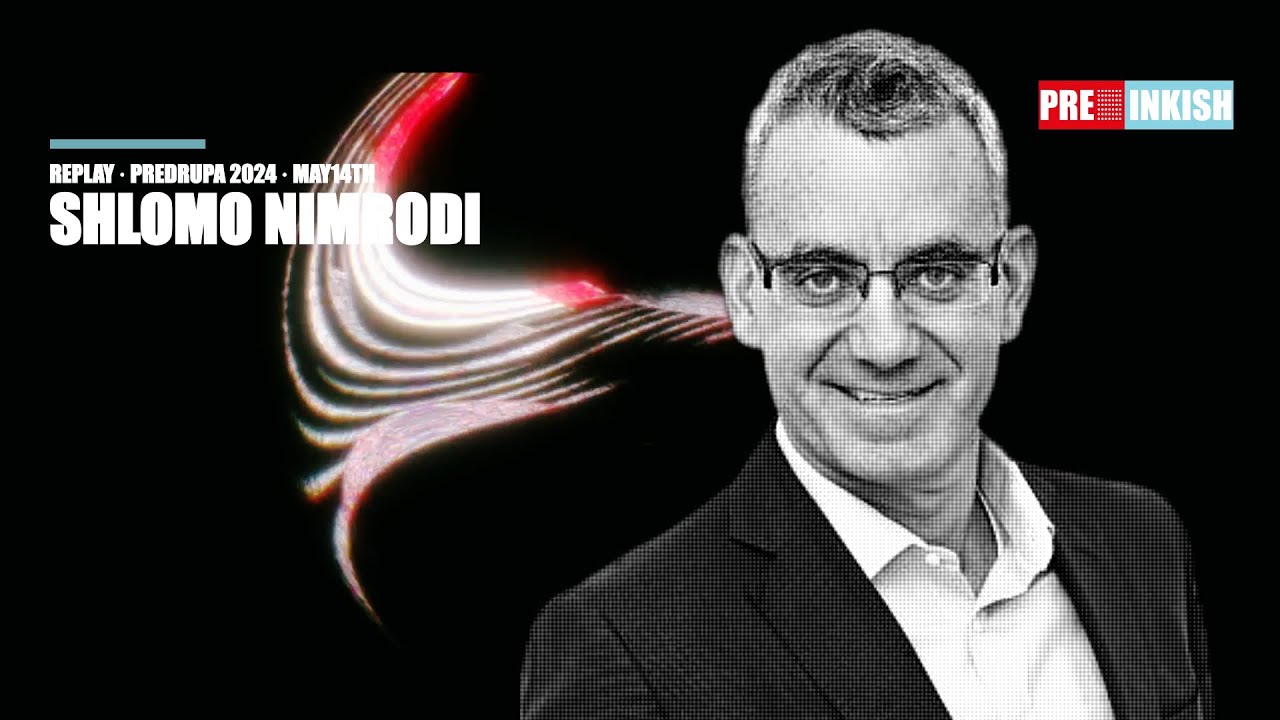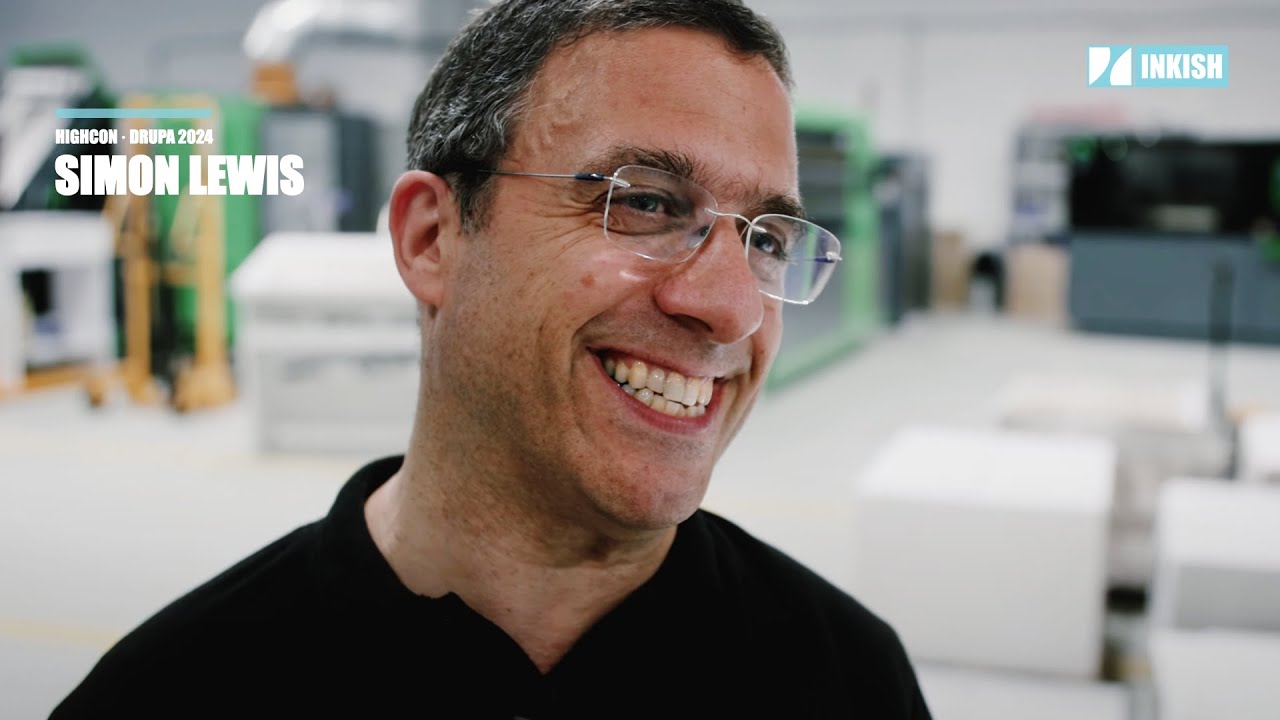Conversations – Aviv Ratzman · CMO · Highcon · Israel
Ten years ago, Highcon was founded. When the company was founded, it was among the very first companies who believed in the idea of doing digital finishing using lasers – and the very first using 3D print to create creases. Highcon has taken off and is today considered one of the leading companies when it comes to digital finishing – and of course, the use of lasers. The Highcon family of products have, of course, since then developed, and rather than ONLY showcase fine, almost, out couture Highcon has moved to be an industrial workhorse. Founder Aviv Ratzman in this conversation talk with editor Morten B. Reitoft about the past, the present, and unfortunately less of the future. However, with drupa around the corner, who knows, maybe there are new things in the pipeline.
Great conversations and important as part of our executive documentation series.
Aviv, it’s such a pleasure to meet you.
Pleasure to be here.
We have been working for the very… we just spoke before the camera’s turned on that actually it’s because of Highcon that Inkish exists.
This is unbelievable. I didn’t know it. I remember the first video that we did, but I didn’t know that this was your first video that you did.
It was not the first video we did, but it was the first video we did from outside Denmark.
Unbelievable.
And that was like a starting point where I started to realize, okay, there might be a business for videos/ but of course we’re not talking about my business, we’re talking about your business, because you are the founder and CEO of Highcon.
Founder and CMO.
CMO. That’s Chief Marketing Officer.
Exactly.
So who is the CEO?
The CEO is Shlomo Nimrodi. I was the CEO of the company till recently and we did a change that I will be more in focus with customers.
Okay. That’s nice, isn’t it?
Yeah.
Yeah. So you have the pleasure of going out and meeting customers and seeing what needs they have.
Exactly.
Okay.
Exactly. This is how we established the company, from a need. So we understand that… Actually, customers came to us, I worked for Indigo before that, that said it’s nice that you are printing fast, but we need not printed material fast, we need a product fast. This is how Highcon established 10 years ago. In November it’s 10 years ago.
So are you going to have a huge party?
A party.
A party.
Yeah, we’re going to have a party. Decent party.
Okay, that’s great. And you said that you started because of a need in the market, but to make products like the Euclid and the Beam and getting into making laser cut in paper, isn’t that just a crazy idea? I mean, wasn’t it a crazy idea?
This is the fun part.
Okay.
Because we started from the need and we know that finishing was analog and the opportunity to change finishing to be digital, this is exciting. Because prepress is digital, printing is moving to digital very fast, and finishing is left behind analog. So the need exists. Now we came from a Indigo, my partner and myself, and we are not afraid from technology. So there is a need, now we need to find the solution. We will find a way to cut and to crease according to technology that exists in the market, or to develop something unique.
Yeah. So I was doing a film for you with [inaudible 00:02:59] in France as well, and one of the things I always… I also think I saw a post you did on Facebook the other day where you said that when you see some name tags or some Christmas gift tags, it was like laser dancing.
Laser dance.
Because it looks so stunning when you see that laser thing. But the reason why I was asking if it was a crazy idea was it’s like putting a fire on paper, right?
Yeah.
It’s very concentrated, right?
It’s very concentrated and the beam is very, very focused in order to really cut very fast. And from one generation to the second generation, we are cutting even faster and even sharper. And yeah, it came from a crazy idea, but the reality is a lot of installation in the markets, customers are doing money with the technology in different segments, folding carton, corrugated, commercial printers. All of them are using the technology for production.
Yeah. Yeah, that’s the important thing. Yeah.
This is the most important thing.
Because, I mean, I think that we, as we also spoke about before, when you go to Drupa, I know that you have this huge booze again at 2020.
Of course.
But when you look at Drupa, I think that, which is fair and unfair, I think that you have got a lot of… It’s fair that you got attention, but I think it was great to see that you did some stunning thing with your technology from almost like an artistic perspective, right? And I think that was great, because that showcased really the capabilities of Highcon’s products. But at the same time I think that taking it from there to be industrial production, that was an important step for you over the past years, to actually showcase that. We’re now not just talking about art, we are talking about something that is, as you said, for corrugated, for folding cartons, for any kind of substrates. That’s actually where it makes sense to make it digital, right?
Exactly. The ability to do creative, this is part of the technology and we would like that the designers will have the freedom to design whatever they want. From the other side you need to sell and our customers need to sell their products, and for that first you’re doing what you’re doing today better. Better in terms of time to market, better in terms of manufacturing what you need when you need it and not manufacturing to stocks. And on top of that, you have the design capabilities that you can do creative things and then to sell value also.
So what you’re saying, if I understand you correctly, is that one thing is that you can do the art thing, another thing is that you can do the daily production thing, but combining these things actually opens up for the more conventional converters to make types of packaging, for example, that they’ve never been able to do before.
Yes, of course. But again, first they are marketing the big benefits: time to market and no minimum quantity.
Yeah.
This is the main things that actually can return the machine very fast.
Yeah.
On top of that is the creativity and we are doing now a few jobs with brand owners, I can’t reveal their names, but it’s in the market already, very unique designs. And the brand owner, they needed the shelf appeal that it will be fantastic. But they need it also fast. And today the time to market, in order to design and manufacture books and put it on the shelf, is around 27 weeks.
Yeah. So that alone, if you have a digital press and you’re have Highcon, that time to market of course changes dramatically and you can even make smaller print runs at feasible prices as well, right? Because you don’t have any set up costs, basically, right?
Exactly. And we have customers that are doing 24 hours delivery.
Yeah. Fast, right? For those who don’t know your products, because there’s probably some who don’t, and I would just say that every time I see Highcon… I think that when I went to [inaudible 00:07:06], I think that one of the things that was really interesting for me to be there is that when you go to a trade show, you always see perfection made demo jobs. Of course. And then you go to a huge printing company and you see that there’s actually put side by side by the [inaudible 00:07:22], by the folding machines, by the gluing machines, by the offset machines, things like that. And their approach was like, okay, the offset machines are today so fast setting up so we can even make small print jobs on the offset machines. But it was the finishing part, the die cutting, that was the-
This is the bottleneck.
Yeah. So for those who don’t know what you do is basically that you have like a range of machines and these are laser [inaudible 00:07:47], and then you also have the dots that are 3D printed inside the machines. So when you make like crease lines and perforations and perforations in creases, you can do that everything inside one machine.
Everything inside one machine and the target was to replace the die cutting tools and the die cutting machine together. So it’s a combination of prepare everything on one machine. And the creasing, we are doing it with a special polymer and this is a 10 minutes, 15 minutes work and then you… This is the setup time. And then you can start production. The sheet is moving between two drum and get the creasing, then move to the lasers and the laser is doing a few things. It can cut, it can perforate, it can etch, it can kiss cut. You have different ways to handle the laser, the power of the laser, in order to do different solution, different performance factors on the box or on the other product that we can do in our machine.
It’s funny that you mentioned the etching, because when we went to Bennett Graphics two weeks ago, or last week it was actually, and they had like a catalog where they are presenting their designs to their designers, and they are doing this etching on some semi leather and it was done on the Highcon. And I was just like, “Wow, it just looks so nice.” I mean, it must be kind of satisfying for you as a founder to see that that crazy idea you got 10, or more than 10, years ago has turned out to a product that works for printing companies. I hope it makes money for their customers, of course, but I think that…
One thing is of course the money. I truly hope they make money on the investment. But the second thing is that-
They are doing.
They are doing that. But the second thing, which I really appreciate as well from an outside perspective, is that you do stunning, from an artistic perspective, from a creator perspective, from, as you said, if you want to have something that on a shelf should be unique and you should have something that really attracts things, that your machine is doing that now every day.
Yeah. This is fun. This is fun. This is fun to see our customers doing money and to see the product on the shelf. This is amazing. And it’s creation. It’s from nothing. We came with the idea and we started design, make the first machine, and now we have customers that’s working with the machine all over the world in all the continents. We have in Australia and we have in Africa, we have in the Americas, in Asia. All over.
I as far as I remember, correct me if I’m wrong and if it’s not public we will cut it out, but you have sold like the second machine also. So some companies have more than one machine, right?
We have six or seven customers that bought a second machine already.
And I guess that you can be stupid enough to buy one, but you can’t be stupid enough to buy two. Right?
Exactly. If you are not doing money on the first machine, you are not going to buy the second one.
Yeah.
And this is a good example. The last one is CSI in the U.S. They bought a second machine.
That was the one I remember, yeah. Yeah.
Yeah. We published it recently. And they feel one machine, they have another location, they bought another machine.
Yeah.
This is the way to present that actually customers enjoy the technology and doing money.
Yeah. If you look at from where you started till now, I think that every time where a new technology is introduced to the market, as you said you, even though you come from understanding a customer’s need and then you start developing and you figure out how to do that and then there’s the green machine, it’s called the Highcon Euclid, right? I’m just curious, from the idea is presented to the first customer actually buys the machine, that must be a tremendously exciting time. Like nerves, like can we cope with this?
This is amazing, because you would like to see that actually the vision became a reality. And when the first customer start to use it and give you feedback, this is amazing. Of course that first feedback, most of the time you need to correct here, you need to correct there.
Of course.
But for this type of technology-
But isn’t that like that with every technology you do, right?
Exactly.
Yeah, yeah.
And this is for this type of technology. If you’re not getting a lot of reaction that you need to correct, it means that it’s not disruptive.
Precisely, yeah.
So you need to look at the half full glass and the half full glass is if you get a lot of feedback, it means that you did something and the customers would like to help you to improve. Perfect.
Yeah. Yeah, you have like an external [R&D 00:00:12:34].
Exactly. The R&D supporting, really collecting from the customers their feedback, their problems, the features that they would like, and implement it afterwards.
And how has the market been to you? Has it been there per plan or has it been more difficult than you had anticipated? I mean, every starting process, of course, takes time. But I was just curious, has it been on plan more or less? Because I guess you needed to invest a lot of money and time in this project, so you need to have an ROI of course.
You’re right. Like every business. But I think I, as an entrepreneur, all the time wants more than what I am achieving. But you need to strive for big and then try to achieve it. But all the time, as someone that built something from zero, I want more.
I mean you have some competition in the market, maybe not in the same range, whatever, but did they come after you? Where you the first one that presented a laser machine like this?
It’s not a laser machine, it’s digital cutting and creasing. The combination-
Yeah. I’m sorry. Basically I’m going to say that every time I see a Highcon working, even though it’s through the brown glass or the dark glass, it’s always like, as you said, like the laser stenciling, it’s so fascinating to see. I’m not a developer, I don’t know anything about this, but when you see how the lasers are working and when you see that actually, as you know, every printer, the first thing they would do, they will eat it or bight in it and they will look if there is brown edges on it. You have even managed that on a lot of different substrates, that you can do something where it’s virtually not seeable or you cannot see anything on it, right?
That’s why I call it a laser thing. And I know it’s maybe wrong because that will maybe put some off. Is that why you’re not saying it?
Yeah. If you’re in the packaging business you’re not just cutting. You have to cut and to crease.
Because you have the other things, of course. Yeah.
And part of the innovation is the creasing.
Yeah.
And the combination of cutting and creasing with the speed of production, this is a big part of the innovation and this is where we are differentiating ourselves from other competitors.
Let’s talk about a little bit about the future. So you have the Highcon Euclid. Is it two or three now?
It’s three.
Three, yeah.
Euclid III.
And then you have the Beam, right?
We have the Euclid III and we have Euclid III C for corrugated and we have the Beam that is a faster machine than the Euclid.
Yeah. Yeah. What is the next step for technology like yours?
I’m not going to tell you all the secrets in front of the-
I’m not asking for any secrets. For example, if you look at digital print, you go from having a four color to having a five color, right? You go from having built-in varnish to have, you know… So it was more in general terms, because you said that when you started Highcon and when you started talking, developing, it was from a demand in the market. Now you have a lot of machines in the market. You have way more experience, you have way more people in the market, so you must also get a lot of more feedback from the market.
So more from a world perspective, where is digital finishing heading?
What we see now is still continuing our vision, folding carton and corrugated. This is the main area that we would like to grow. And we see huge opportunity, because the amount of die cutting, regular conventional die cutting machine, that market is huge and the opportunity is huge and the market is growing. Sometimes it’s not a proportional to the GDP, because e-commerce for example, is really changing the market. So you see a few trends that actually-
Ah, so you could say that if you have a GDP where you have rapid growth and that is maybe with e-commerce, then there can be an even higher need for small print [inaudible 00:17:15] so fast moved packaging as well?
This is one side. From the other side, the sustainability is getting faster and bigger and more important to the world. And for us this is part of the technology, because if you can manufacture what you need when you need it, it’s actually helping the sustainability.
That’s interesting, right? So you look like a happy man.
Yeah, of course. Of course. I’m very happy.
Okay.
I enjoy every moment.
Okay. And we are here at Printing United. I have to ask you, so how has it been the first day for you?
Very good. We see a lot of interaction with customers, people that didn’t know us before, people that know us and would like to continue the conversation. So it’s fantastic.
Thank you very much.
Thank you very much also.







































































